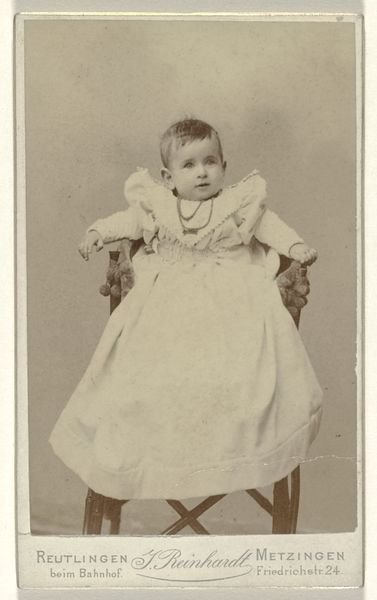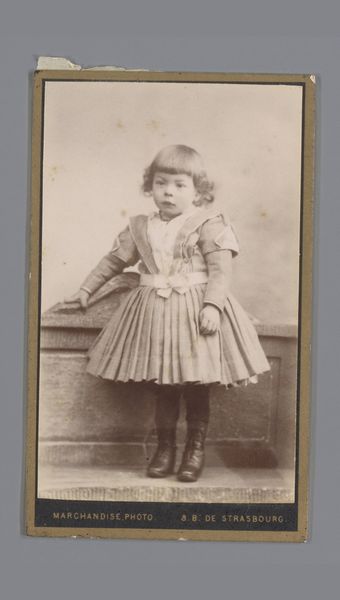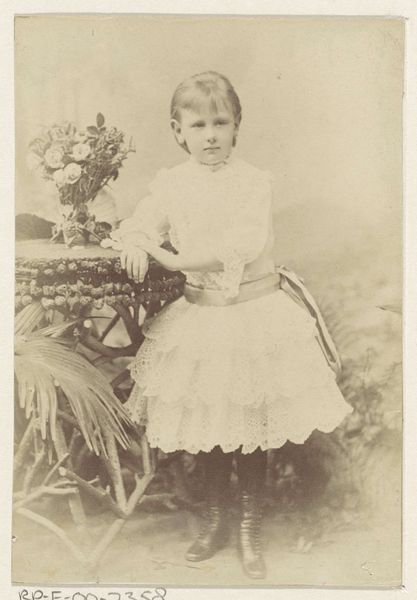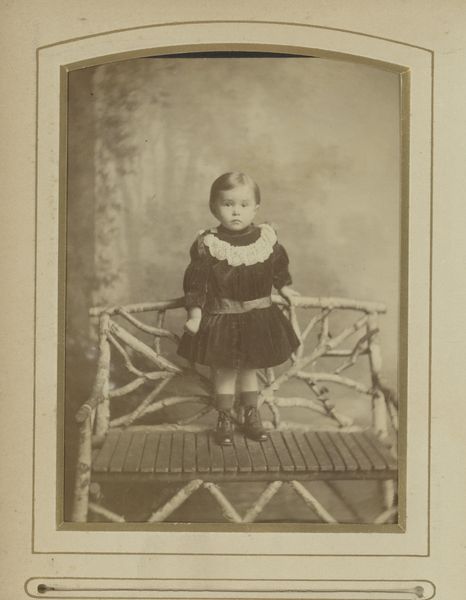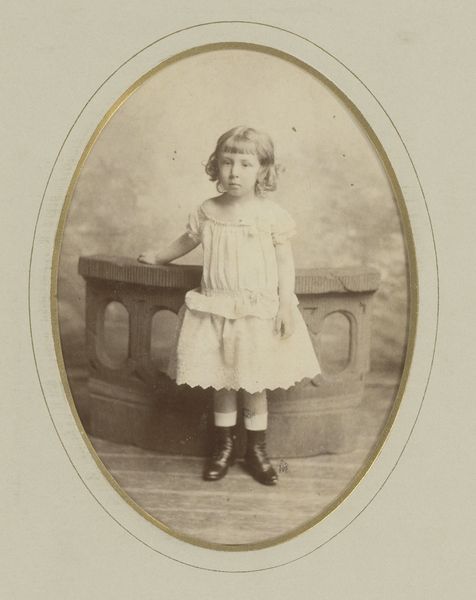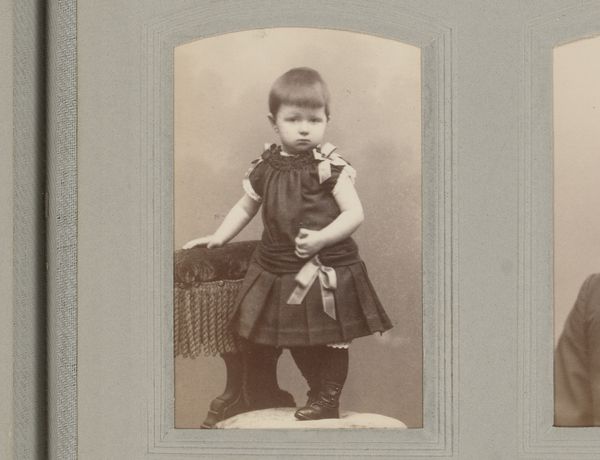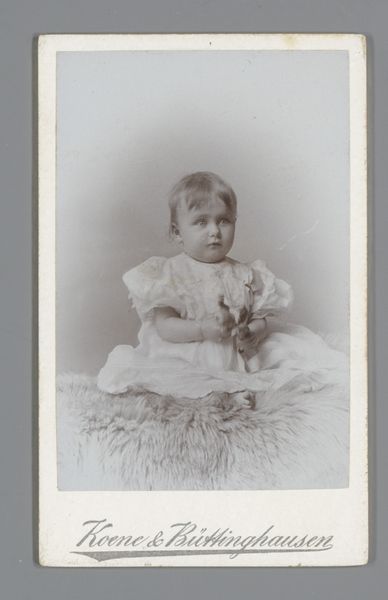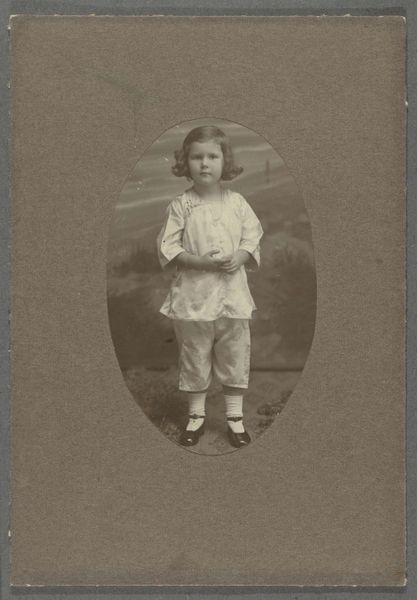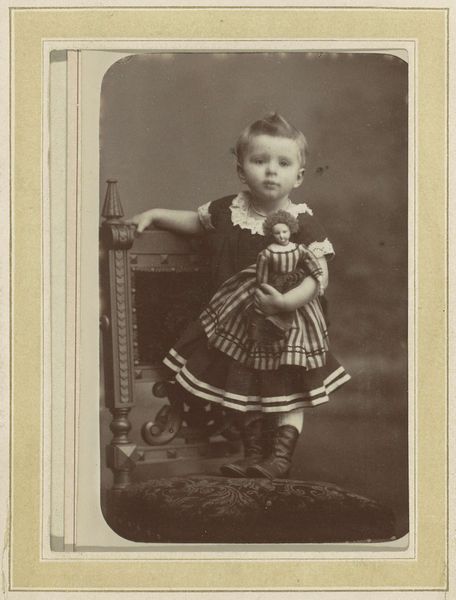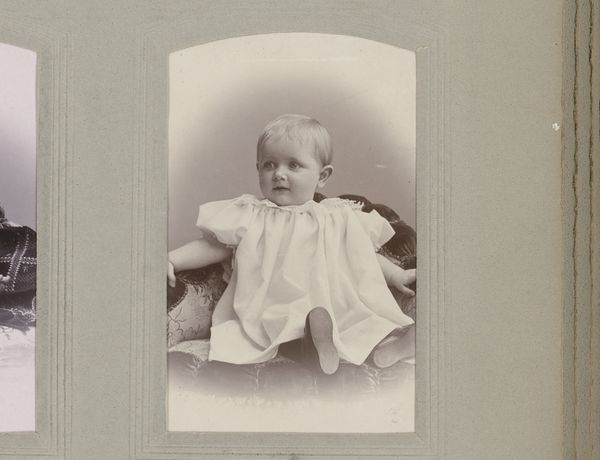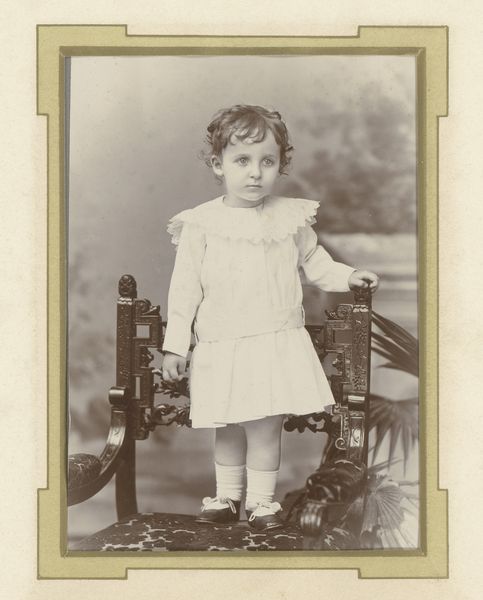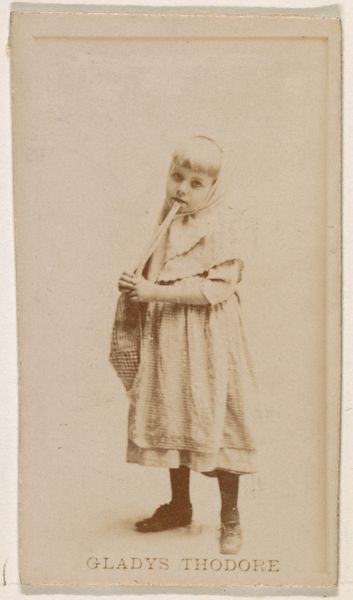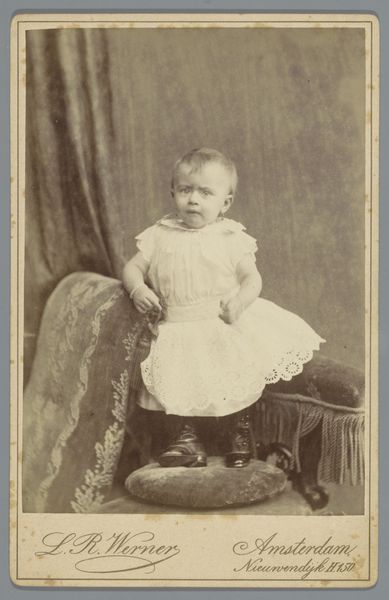
Kind in jurk met donkere schouderstukken en donker lint om het midden, met pop in de armen en plant op de voorgrond 1870 - 1910
0:00
0:00
photography
#
16_19th-century
#
archive photography
#
photography
#
historical photography
#
19th century
#
genre-painting
Dimensions: height 105 mm, width 65 mm
Copyright: Rijks Museum: Open Domain
Curator: Here we have an intriguing photograph, “Kind in jurk met donkere schouderstukken en donker lint om het midden, met pop in de armen en plant op de voorgrond” by P. Krabo, likely taken between 1870 and 1910. It’s a small-format, sepia-toned portrait. Editor: Immediately, the child’s solemn expression strikes me. There's a vulnerability that's so present, despite the formal composition. Curator: The composition certainly draws the eye. Krabo’s use of light and shadow defines the form of the child. The photograph uses vertical lines of the plants versus the horizontal of the little girl's ribbon and shoulder accents to great effect. Editor: I'm also considering the trappings of girlhood in this era. The dark ribbon around her waist feels almost constricting, doesn't it? Juxtaposed with her cross pendant, one wonders about the messages imparted to young girls in that period, the doll like another reflection of how they were presented in society. Curator: Interesting, from a purely formal standpoint, that dark ribbon provides a crucial grounding for the figure, anchoring her within the frame, but yes, one may well project beyond that into cultural interpretations. The sepia tones impart a certain melancholy as well, one accentuated by the sharpness of focus on the child. Editor: Absolutely. The doll, too, becomes symbolic—a miniature version of the child herself, meant to be cared for, reflecting the future expectations placed upon her. It speaks volumes about societal roles. Also, the studio address printed at the bottom connects the production of identity with commercial interest of representing sitters who were wealthy enough to frequent studios such as that of P. Krabo. Curator: It does encourage further reflection, doesn't it? A compelling visual artifact that speaks, through form and subject matter, to ideas that persist well beyond its creation. Editor: Indeed, it reminds us that even seemingly simple portraits hold layers of meaning, inviting us to question the narratives they present and whose interests they served.
Comments
No comments
Be the first to comment and join the conversation on the ultimate creative platform.
